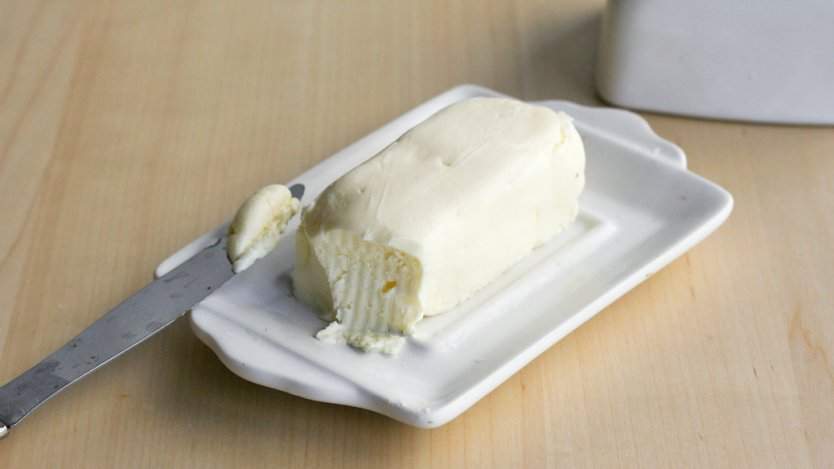Canada has an impressive array of local dairy and cheese, but when it comes to butter we've been described as a butter backwater for having a poorer selection at a higher cost. The basic brands at our grocery stores usually do the trick, but if you're looking to top your toast with something amazing, you can:
- Wait for the artisan butter movement to make its way to a store near you, or;
- Bravely take matters into your own capable hands and make your own mind-blowingly-good butter at home (or both--make some at home while you wait for the butter movement).
Prep the ingredients
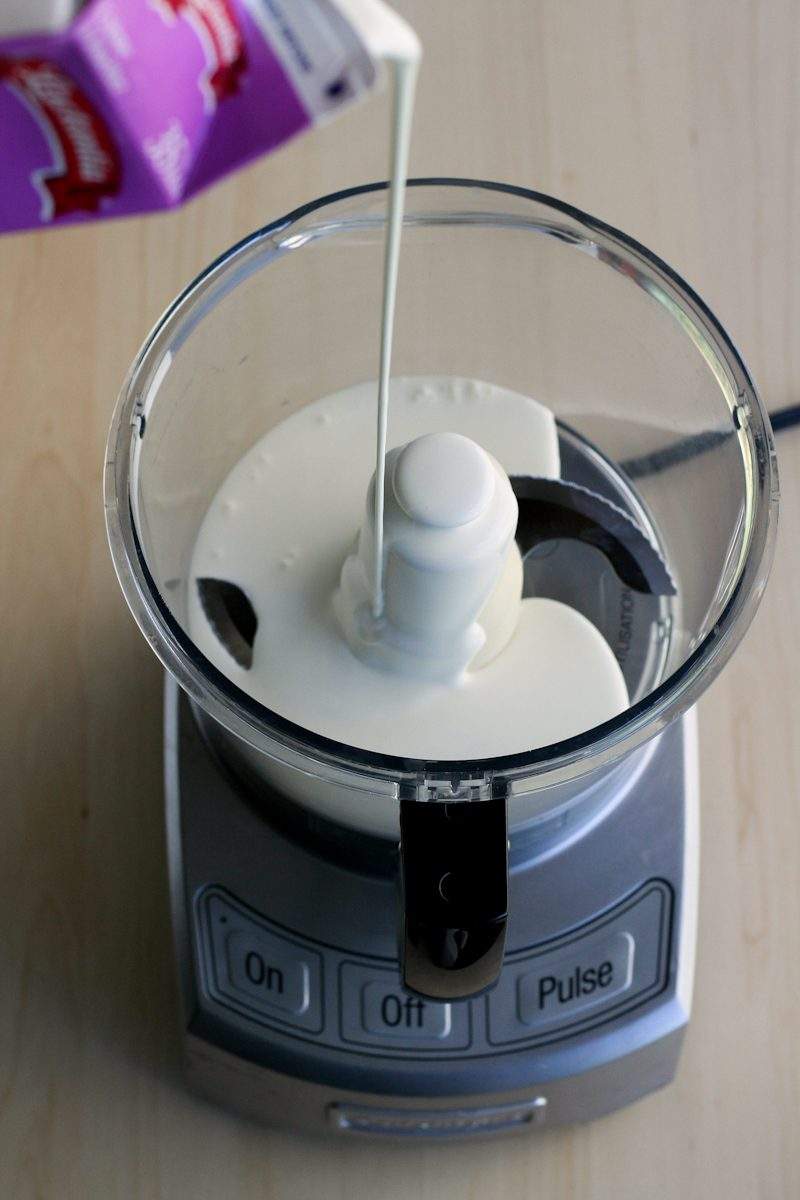
First, you'll need whipping cream. One litre of cream will give you roughly four sticks of butter. You can stick to the cheaper, but still delicious, brands from your the grocery store, or you can go all out and splurge on local/organic cream from a farmers' market or whole foods store. Chill the cream in the fridge overnight.
Churn
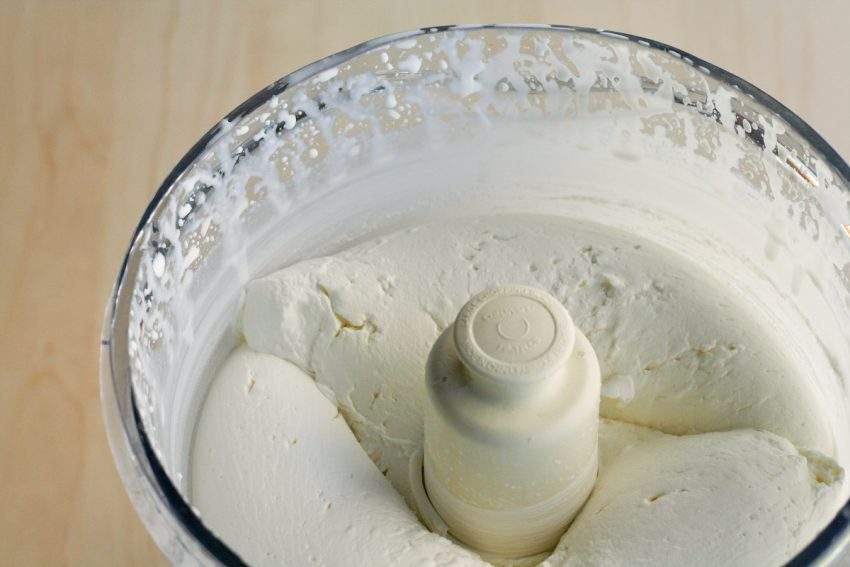
Fill the bowl of the food processor halfway with the chilled cream, pop the lid on, and start churning.
The cream will begin to thicken and start looking fairly solid. Keep on churning!
It will get thicker and thicker until the butter curds form, then you'll hear the liquid sloshing around inside as the curds separate out.
In the old days, this process (done with a bucket and stick) would take significantly longer — longer than our high-speed modern brains can handle. Still, it doesn't happen instantly, so have your iPhone or laptop nearby to keep yourself entertained for the six or so minutes it will take the food processor to churn out the butter.
Rinse
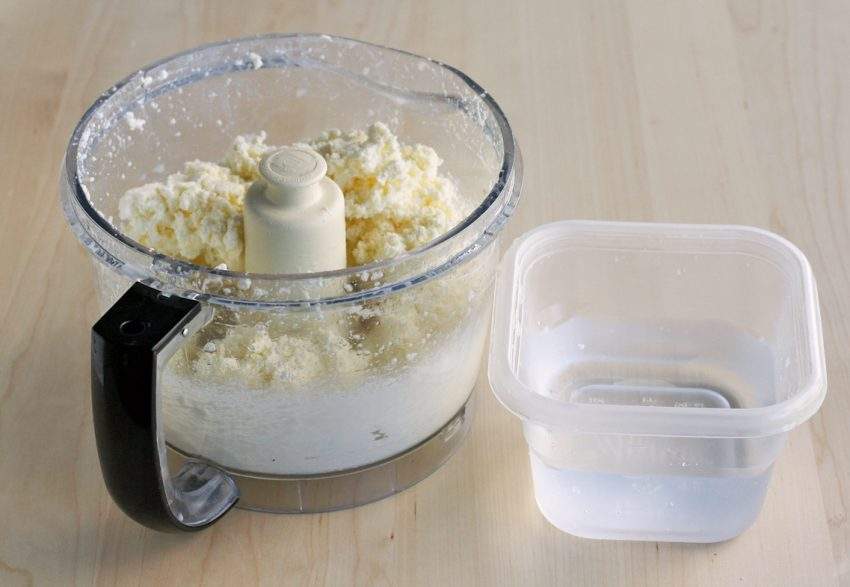
Once the butter has separated from the liquid, it needs to be rinsed clean. Pour off as much of the liquid as possible and replace it with ice cold water. Pulse the food processor four times, then pour off the now-cloudy ice water. Repeat three more times.
Strain

Line a strainer with either a cheesecloth or a clean, thin washcloth (a J cloth, pictured here, works well). Scoop the butter into the strainer, then squeeze out any remaining liquid.
Note: since this is fresh butter, the liquid created is not the same as buttermilk. In order to produce buttermilk, you need to add a culture to the cream, allow it to ripen, and then churn it into butter. The pH is different so the liquid will not be thick nor tangy.
Season
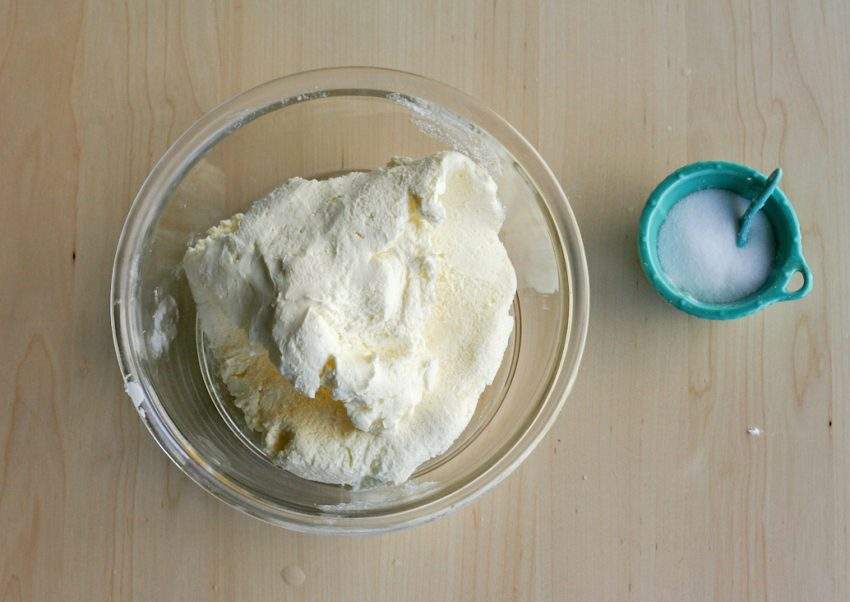
If you want to salt your butter, place it in a chilled bowl, sprinkle it with salt, and quickly knead the salt in. It helps to hold a couple of ice cubes before doing this to prevent your hands from melting the butter.
Form

Divide the butter between squares of parchment paper. Roll them into logs, and tightly twist off the ends to seal the butter in. It will keep at room temperature for a week or so, and in the fridge or freezer for a few months.
And there you have it: buttery success!
You are a modern pioneer, slaving over your food processor for literally minutes on end to bring fresh butter to your table. Feel free to tell people that you milked the cows yourself.

